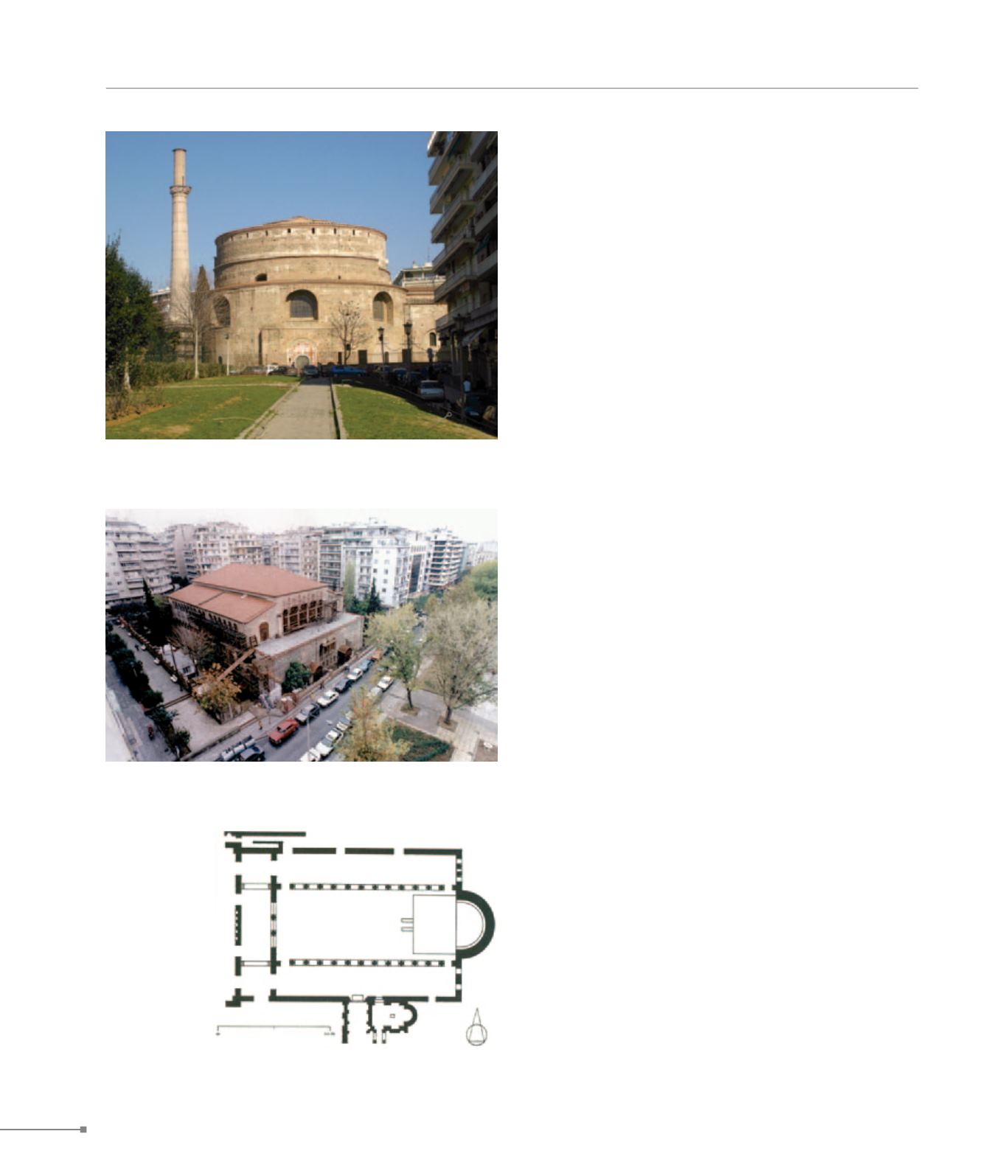
Thessaloniki.
Thessaloniki.
MACEDONIA
132
112. Thessaloniki, Rotunda (Θεσσαλονίκη, Ροτόντα)
with a dome supported by eight arches, via eight pendentives.
Today, the narthex and the dome have collapsed and thus
the building is entered from the north, not the west, side. The
church retains traces of painted decoration dating from the
late 12th c. In the interior, part of the marble sarcophagus of
Michael Asanis (13th c.) is preserved, featuring a bilingual in-
scription. From the Metamorphosis church comes the icon of
Panagia Vrefokratoussa of the 14th c., which is kept today at
the church of Saint George.
112.
Thessaloniki.
Thessaloniki, right after the establishment of Caesar Galerius
there (early 4th c.), became an imperial city and was endowed
with a palace complex, a hippodrome, rich public edifices, and
glorious churches like the Rotunda. Under Constantine the
Great, a tunnelled harbour was constructed in 320, and gradual
Christianisation began with the erection of the first Christian
churches (an
oikiskos
above the bath house in which Aghios
Demetrios was martyred, Basilica A beneath Aghia Sophia
and a hexagonal baptistery to its S, and the establishment of
cemeteries when the first martyria were founded (martyria at
Aghios Demetrios Hospital and on Trikoupi-Velissariou Streets
at the Eastern Cemetery). At the time of Theodosius (after 390)
new fortifications were constructed, utilising the existing natural
streams as a moat and including a main wall and a bulwark;
the citadel is considered to be of a subsequent phase. In the
same period – or in the mid-5th c. according to other sourc-
es − the Rotunda was converted into a Christian church and
decorated with mosaics depicting a scene of the Second Com-
ing on three bands. In the late 4th c. the construction of the
large octagonal church began at Letaia Gate; other structures
included the funerary basilica with an attached cross-shaped
martyrium at the Eastern Cemetery, which was revealed during
works for the opening of Tritis Septemvriou Street, the funer-
ary basilica of Heptapyrgion, and the martyrium at the West-
ern Cemetery dedicated to Saints Irene, Agape and Chionia.
In the 5th c. the first, possibly three-aisled, basilica of Aghios
Demetrios was founded; as well as, in 460, the church of Pana-
gia Acheiropoietos, with exquisite mosaics on the intrados; the
three-aisled basilica of Aghios Menas with the extremely inter-
esting carved epistyle decorated with animal images; the cross-
shaped church of Hosios David inscribed in a square plan (in
Byzantine times it functioned as the catholicon of the Latomos
monastery), with the unique apse mosaic depicting a eucharis-
tic vision; and the large five-aisled basilica, underneath Aghia
Sophia, dedicated to Saint Mark. Also in the 5th c. the martyri-
um of Saint Anysia was founded at the Eastern Cemetery, and a
little further N the martyrium near the Kolymveterion (swimming
pool). In the second half of the 5th c. the basilica of Aghios
Demetrios was converted into a five-aisled church. In the 6th c.
the five-conch martyrium, located at Kallitheas Street, was built,
112. Thessaloniki, Acheiropoietos (Θεσσαλονίκη, Αχειροποιητος)
112. Thessaloniki, Acheiropoietos, ground plan (Θεσσαλονίκη,
Αχειροποίητος, κάτοψη)


